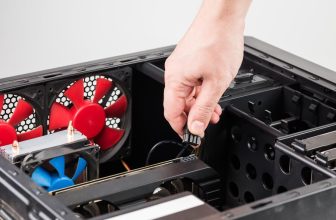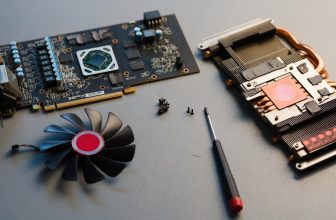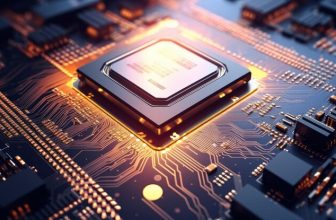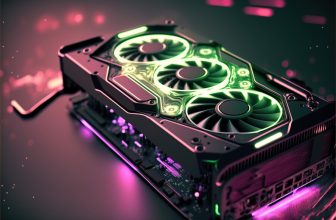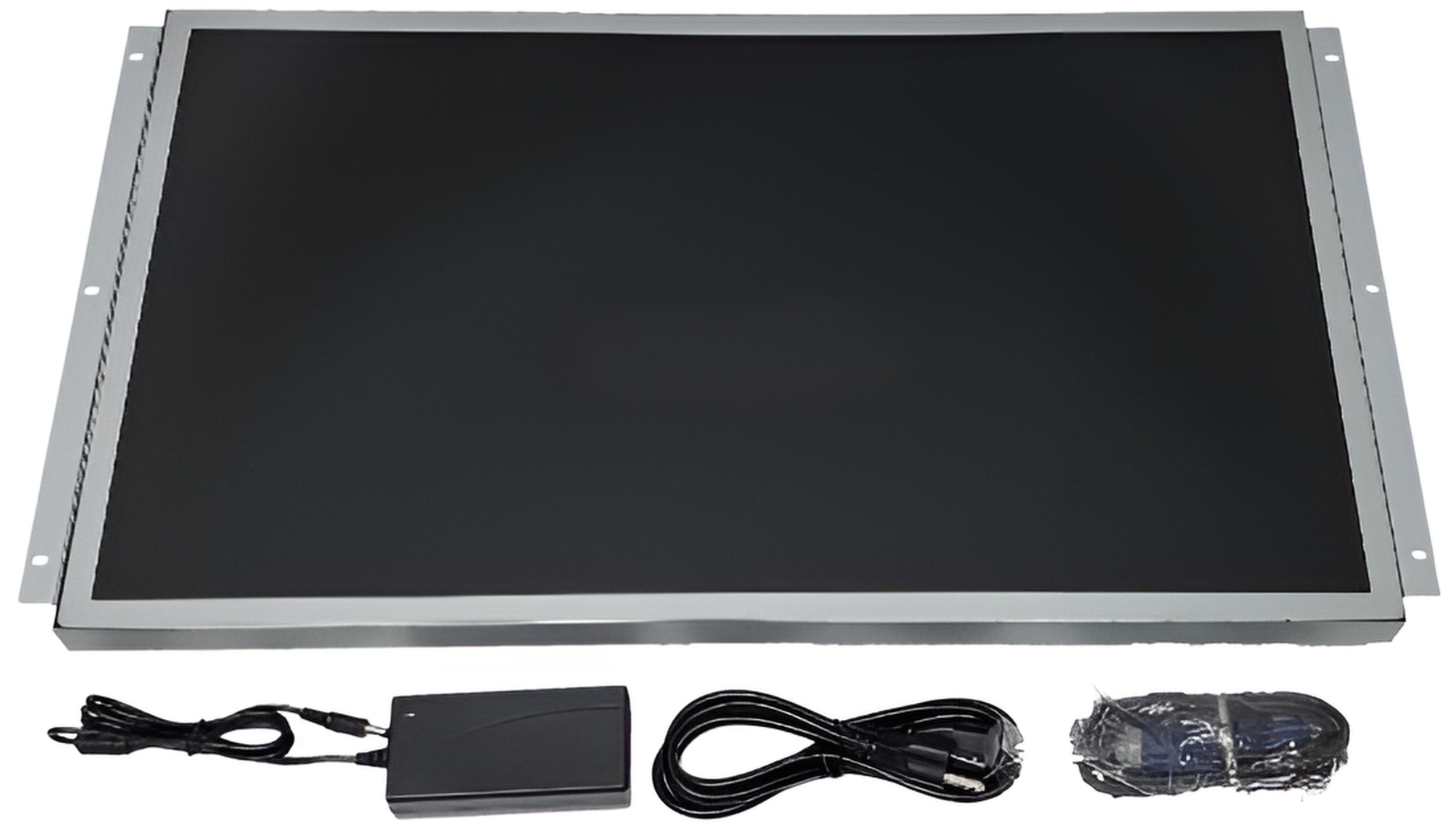
In the realm of gaming, the selection of the optimal display can wield substantial influence over the outcome, distinguishing triumph from defeat. Two eminent contenders vying for supremacy in the gaming monitor domain encompass IPS (In-Plane Switching) and LED (Light Emitting Diode) screens. Within the confines of this composition, we shall embark on an exhaustive exploration of the pivotal disparities between (IPS vs LED Monitor for Gaming) these two technological marvels, empowering you to make a judicious choice when the moment arrives to elevate your gaming escapades to a higher echelon.
Devotees of gaming understand that an exceptional graphics card in isolation fails to guarantee an immersive gaming odyssey. Your selection of a monitor wields substantial influence over how you perceive and engage with the virtual realm. In this vast array of choices, IPS and LED monitors emerge as prominent contenders. But the question lingers: which one best suits your gaming exigencies?
Table of Contents
Table highlighting the key differences between IPS vs LED Monitor for Gaming:
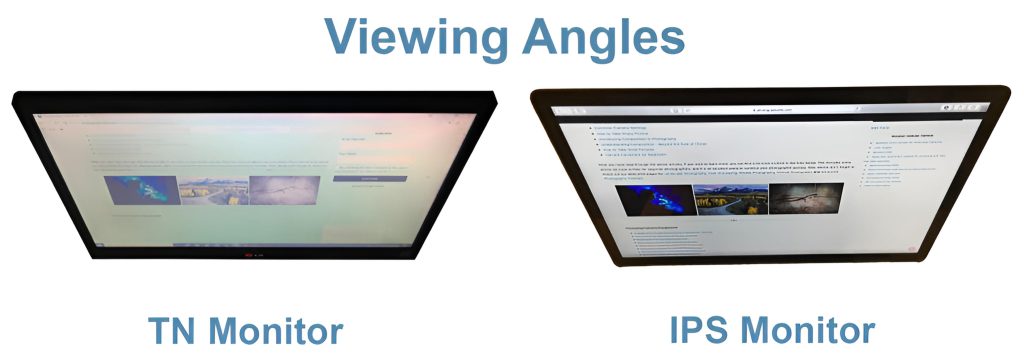
| Characteristic | IPS Monitor | LED Monitor |
|---|---|---|
| Display Technology | In-Plane Switching (IPS) | Light Emitting Diode (LED) |
| Viewing Angles | Excellent; wide viewing angles | Good; may have limited angles |
| Color Accuracy | High; accurate and consistent | Good; can vary between models |
| Response Time | Typically higher (slower) | Generally lower (faster) |
| Contrast Ratio | Good, but may not match OLED | Can vary, may have high contrast |
| Power Efficiency | Consumes more power | Generally more energy-efficient |
| Price Range | Often more expensive | A wide range of price options |
| Primary Use Cases | Professional design, photo editing | General use, gaming, multimedia |
The above table shows the special differences between IPS display monitor and LED display monitor
Deciphering IPS Monitors | IPS Monitor vs LED for Gaming
IPS monitors, an abbreviation for In-Plane Switching, carve a niche for themselves with their remarkable prowess in color replication and expansive vistas of visual access. These monitors harness a distinctive liquid crystal technology, a harbinger of steadfast color consistency. This distinction renders them the preferred choice for gamers who prize precision and exuberance.
The expression “IPS” alludes to the kind of innovation that is used in the creation of LCD (Fluid Precious stone Showcase) screens. IPS screens can be broken down by focusing on the following key issues:
Variety Precision and Consistency:
- IPS screens are known for giving precise and reliable variety propagation. They are suitable for professional graphic design, photo editing, and other color-sensitive tasks due to their wide viewing angles and lack of color shifts.
Wide Perspectives:
- One of the principal benefits of IPS innovation is its wide review points. This implies that you can see the screen from various points without a huge loss of variety precision or differentiation, which is particularly significant for cooperative work or when the screen is seen from different positions.
Preferable Variety Generation over TN Boards:
- Contrasted with TN (Bent Nematic) boards, one more typical sort of LCD innovation, IPS screens for the most part give better variety multiplication. TN panels may have faster response times, but their color accuracy and viewing angles frequently suffer.
More slow Reaction Times contrasted with TN Boards:
- While IPS boards have worked on over the long haul, they customarily have more slow reaction times contrasted with TN boards. This may be a thought for speedy gaming or applications where quick picture changes are urgent. Nonetheless, current IPS boards with higher invigorate rates have restricted this hole.
Reasonable for Proficient Work:
- For professional applications like “IPS vs LED Monitor” graphic design, video editing, and professional photography in which color consistency and accuracy are essential, IPS monitors are preferred.
Various IPS Ages:
- There are various ages of IPS innovation, with progressions in every emphasis. For instance, you could go over terms like “IPS,” “IPS Expert,” “Super-IPS,” or “High level Super-IPS.” These terms might show upgrades in viewpoints like reaction time, variety exactness, or power proficiency.
Goal and Size:
- IPS screens come in different goals (Full HD, 2K, 4K) and sizes. Consider your inclinations and necessities while picking a screen, remembering factors like work area, use, and spending plan.
Gaming IPS Screens:
- A few IPS screens are explicitly intended for gaming, offering highlights like higher invigorate rates and versatile sync innovations (like NVIDIA G-Sync or AMD FreeSync) to improve the gaming experience.
PS monitors are well-suited for professional tasks that require accurate and consistent color representation because of their wide “IPS vs LED Monitor” viewing angles and superior color reproduction. Be that as it may, clients ought to likewise consider factors like reaction time, invigorate rate, and explicit application prerequisites while picking an IPS screen.
Explaining that the expressions “IPS” and “Drove” allude to various parts of a screen, and they are not fundamentally unrelated is significant. How about we separate the correlation:
IPS (In-Plane Exchanging):
- IPS alludes to the kind of LCD (Fluid Gem Show) innovation utilized in the screen. The wide viewing angles and precise color reproduction of IPS panels make them suitable for professional content creation, photo editing, and graphic design, among other fields that require color precision.
- IPS screens for the most part have better variety exactness and consistency contrasted with other LCD board types like TN (Contorted Nematic).
Driven (Light Producing Diode):
- Driven alludes to the backdrop illumination innovation utilized in LCD screens. Driven backdrop illumination is normally utilized on the grounds that it offers better energy effectiveness and takes into consideration more slender and lighter screen plans contrasted with more established CCFL (Cold Cathode Fluorescent Light) backdrop illumination.
- Most present day screens, incorporating those with IPS boards, utilize Drove backdrop illumination. As a result, the comparison “IPS vs LED Monitor” between IPS and LED takes into account how well the panel technology (IPS) and the backlighting technology (LED) work together.
Gaming Contemplations:
- The two IPS and Drove innovations can be appropriate for gaming, however each has its own assets and shortcomings.
- IPS monitors typically have wider viewing angles and better color reproduction, both of which can enhance the gaming experience, particularly when playing visually immersive games.
- Driven backdrop illumination adds to more splendid shows and better energy productivity. Driven screens are frequently accessible with high revive rates, which can be significant for speedy gaming.
Reaction Time:
- Reaction time is a basic figure gaming screens. IPS panels have traditionally had slower response times than TN panels, which can cause motion blur in scenes that move quickly. Notwithstanding, headways in IPS innovation, for example, the presentation of “IPS gaming screens” with higher revive rates and quicker reaction times, have alleviated this issue.
Versatile Sync Innovation:
- The two IPS and Drove screens can highlight versatile sync advancements like NVIDIA G-Sync or AMD FreeSync. These innovations assist with decreasing screen tearing and faltering during gaming by synchronizing the screen’s invigorate rate with the designs card’s casing rate.
Exploring the Domain of LED Displays

LED monitors employ Light Emitting Diodes to illuminate the screen. LED technology predominantly constitutes a methodology for backlighting, rather than a standalone display technology. LED monitors manifest in various display iterations, including IPS, TN (Twisted Nematic), and VA (Vertical Alignment).
| Company Name | Model | Display Type | Display Size |
|---|---|---|---|
| Samsung | QLED TV QN65Q80A | QLED | 65 inches |
| LG | OLED TV OLED65C1 | OLED | 65 inches |
| Sony | Bravia XR X95J | LED | 65 inches |
| TCL | 6-Series R635 | LED | 65 inches |
| Vizio | P-Series Quantum X PX75-G1 | LED | 75 inches |
Driven shows, or Light Discharging Diode shows, address a flexible and broadly utilized innovation across different applications. Here is an investigation of the area of Driven shows:
Basic Technologies:
- LEDs are semiconductor gadgets that transmit light when an electric flow goes through them. Driven shows use a variety of these little light sources to make pictures or text.
Kinds of Driven Showcases:
- Driven TVs and Screens: Driven enlightened TVs and screens use LEDs for background brightening the LCD board. When contrasted with more seasoned CCFL (Cold Cathode Fluorescent Light) backdrop illumination, they give all the more even enlightenment, further developed splendor, and better energy effectiveness.
- Driven Video Walls: Driven modules are joined to make huge, consistent shows frequently utilized out in the open spaces, arenas, and for advanced signage. These showcases can be tweaked to fit explicit sizes and shapes.
- Driven Boards: Large LED displays are frequently used in outdoor advertising due to their brightness and visibility in a variety of lighting conditions. These bulletins can be dynamic, showing changing substance and notices.
- Events’ LED Screens: Driven shows are usually utilized in occasions like shows and meetings. They offer high splendor, dynamic tones, and can be designed into various shapes and sizes.
Benefits of Driven Showcases:
- Energy Proficiency: Driven innovation is energy-productive, making Drove shows all the more harmless to the ecosystem and savvy over the long haul.
- Splendor and Perceivability: Driven shows are known for their high brilliance levels, making them appropriate for outside use and conditions with heaps of encompassing light.
- Variety Proliferation: Driven innovation considers a wide variety range, giving lively and exact tones in shows.
- Longevity: LEDs have a more extended life expectancy contrasted with conventional lighting innovations, adding to the strength of Driven shows.
- Thin Plan: LED displays can be made very thin, which helps make modern “IPS vs LED Monitor” televisions and monitors look slim.
Pixel Pitch and Goal:
- Pixel pitch alludes to the distance between individual pixels on a Drove show. More modest pixel contribute values result higher goal and better picture quality, particularly at close review distances.
Smart LED Monitors:
- A few Drove shows accompany shrewd highlights, permitting clients to interface with the web, stream content, and access applications straightforwardly on the presentation.
Challenges:
- While Drove shows offer various benefits, they might confront difficulties, for example, potential variety exactness issues, cost, and the requirement for specific establishment in specific cases.
Drove shows have turned into an essential piece of our day to day routines, from the screens we use for diversion and work to huge scope shows out in the open spaces. Their flexibility, energy proficiency, and capacity to convey energetic visuals settle on them a well known decision in different applications across various enterprises.
Response Time and Input Lag IPS Monitor vs LED for Gaming
In the realm of gaming, the pivotal determinants encompass response time and input lag. A diminished response time assures the seamless portrayal of high-speed escapades, while minimal input lag facilitates the expeditious “IPS vs LED Monitor” execution of your directives. While both IPS and LED monitors hold the potential for stellar performance, select high-tier gaming LED monitors lay claim to a competitive edge in this domain.
Reaction time and information slack are significant elements to consider while picking a screen for gaming, and they can differ between IPS (In-Plane Exchanging) and Drove (Light Discharging Diode) shows. We should investigate how these angles contrast:
Time to respond:
- IPS Screen: Customarily, IPS boards have been known for having more slow reaction times contrasted with other board types like TN (Bent Nematic). Reaction time is the time it takes for a pixel to change starting with one variety then onto the next. More slow reaction times might possibly prompt movement obscure, which might be recognizable in high speed gaming situations.
- Driven Screen: In this context, the term “LED” typically refers to the monitor’s backlighting technology. Driven screens can utilize various sorts of boards, including IPS, TN, or VA (Vertical Arrangement). The underlying panel technology determines an LED monitor’s response time.
IPS Technology Developments:
- IPS Gaming Screens: Producers have created gaming-centered IPS screens with further developed reaction times. These screens frequently highlight quicker invigorate rates (e.g., 144Hz, 240Hz) and upgraded reaction times to diminish movement obscure. Some gaming IPS screens are explicitly intended to give a superior harmony between variety exactness and quick moving gaming execution.
Input Slack:
- IPS Screen: Input slack is the postpone between a client’s feedback (e.g., squeezing a button on a console or mouse) and the relating activity on the screen. IPS screens generally had higher info slack contrasted with TN boards. Notwithstanding, present day IPS screens, particularly those intended for gaming, expect to limit input slack for a more responsive gaming experience.
- Driven Screen: Like reaction time, input slack on a Drove screen relies upon the fundamental board innovation. In comparison to IPS panels, some LED monitors, particularly those with TN panels, may have lower input lag.
Gaming Contemplations:
- IPS Screens for Gaming: A gaming-oriented IPS monitor can offer a good balance if color accuracy, wide viewing angles, and a more immersive visual experience are priorities. Search for IPS screens with higher revive rates (e.g., 144Hz or higher) and lower reaction times.
- Driven Screens with TN Boards: Driven screens that utilization TN boards are in many cases picked for gaming because of their quicker reaction times and possibly lower input slack. In any case, TN boards might think twice about variety exactness and survey points contrasted with IPS boards.
Technology for Adaptive Sync:
- The two IPS and Drove screens can highlight versatile sync advancements like NVIDIA G-Sync or AMD FreeSync. By synchronizing the monitor’s refresh rate with the graphics card’s frame rate, these technologies enhance the gaming experience and reduce screen tearing and stuttering.
The Mosaic of Color Precision and Vivacity
Gamers invariably clamor for a palette teeming with vivid, verisimilar hues. In this context, IPS monitors triumph, endowing extraordinary fidelity to color and exuberance. LED monitors, contingent upon their specific display type, proffer varying calibers of chromatic excellence.
Navigating the Vantage Points IPS Monitor vs LED for Gaming
A marked advantage accompanying IPS monitors encompasses their expansive viewing angles. This implies that even when ensconced at a tangential angle to the screen, an unblemished, distortion-free panorama endures. In contrast, LED displays, particularly those enlisting TN panels, grapple with transmutations in color and contrast when perceived from divergent angles.
Reaction time and information slack are significant elements to consider while picking a screen for gaming, and they can differ between IPS (In-Plane Exchanging) and Drove (Light Discharging Diode) shows. We should investigate how these angles contrast:
Time to respond:
- IPS Screen: Customarily, IPS boards have been known for having more slow reaction times contrasted with other board types like TN (Bent Nematic). Reaction time is the time it takes for a pixel to change starting with one variety then onto the next. More slow reaction times might possibly prompt movement obscure, which might be recognizable in high speed gaming situations.
- Driven Screen: In this context, the term “LED” typically refers to the monitor’s backlighting technology. Driven screens can utilize various sorts of boards, including IPS, TN, or VA (Vertical Arrangement). The underlying panel technology determines an LED monitor’s response time.
IPS Technology Developments:
- IPS Gaming Screens: Producers have created gaming-centered IPS screens with further developed reaction times. These screens frequently highlight quicker invigorate rates (e.g., 144Hz, 240Hz) and upgraded reaction times to diminish movement obscure. Some gaming IPS screens are explicitly intended to give a superior harmony between variety exactness and quick moving gaming execution.
Input Slack:
- IPS Screen: Input slack is the postpone between a client’s feedback (e.g., squeezing a button on a console or mouse) and the relating activity on the screen. IPS screens generally had higher info slack contrasted with TN boards. Notwithstanding, present day IPS screens, particularly those intended for gaming, expect to limit input slack for a more responsive gaming experience.
- Driven Screen: Like reaction time, input slack on a Drove screen relies upon the fundamental board innovation. In comparison to IPS panels, some LED monitors, particularly those with TN panels, may have lower input lag.
Gaming Contemplations:
- IPS Screens for Gaming: A gaming-oriented IPS monitor can offer a good balance if color accuracy, wide viewing angles, and a more immersive visual experience are priorities. Search for IPS screens with higher revive rates (e.g., 144Hz or higher) and lower reaction times.
- Driven Screens with TN Boards: Driven screens that utilization TN boards are in many cases picked for gaming because of their quicker reaction times and possibly lower input slack. In any case, TN boards might think twice about variety exactness and survey points contrasted with IPS boards.
Technology for Adaptive Sync:
- The two IPS and Drove screens can highlight versatile sync advancements like NVIDIA G-Sync or AMD FreeSync. By synchronizing the monitor’s refresh rate with the graphics card’s frame rate, these technologies enhance the gaming experience and reduce screen tearing and stuttering.
The expressions “IPS” and “Drove” allude to various parts of a screen, and each can be reasonable for gaming relying upon the particular model and elements. While choosing a gaming screen, consider factors, for example, board innovation, reaction time, input slack, revive rate, and the incorporation of versatile sync innovations to guarantee a wonderful gaming experience in light of your inclinations and needs.
The Axiom of Resolution IPS Monitor vs LED for Gaming
Both IPS and LED monitors proffer an assortment of resolutions. Augmented resolutions herald sharper visual renditions, albeit at the cost of augmented GPU horsepower requisites. Prudent consideration of your gaming rig’s capabilities must precede your indulgence in an ultra-high-resolution exhibit.
In the context of monitors, the “axiom of resolution” refers to the clarity and detail that a display can provide, which is frequently linked to factors like screen resolution and pixel density. We should investigate how the aphorism of goal applies to IPS (In-Plane Exchanging) screens versus Driven (Light Discharging Diode) screens for gaming:
Screen Goal:
- IPS Screen: IPS screens come in different goals, including Full HD (1920×1080), Quad HD (2560×1440), and 4K (3840×2160). Higher goals for the most part give more keen and more nitty gritty pictures. A higher goal is especially helpful in enormous presentations, offering a smoother and more vivid gaming experience.
- Driven Screen: The expression “Drove” alludes to the backdrop illumination innovation, and Drove screens can utilize different board types, including IPS. As a result, LED monitors may also come in a variety of resolutions. Driven innovation is usually utilized in screens with various goals, offering adaptability in taking special care of various inclinations and spending plan contemplations.
Pixel Thickness:
- IPS Screen: The pixel not entirely settled by the mix of the screen’s goal and actual size. IPS screens with higher goals frequently have higher pixel thickness, bringing about more keen pictures and text. This can be profitable for gaming as it upgrades the visual lucidity of game components.
- Driven Screen: Like IPS screens, Drove screens can have changing pixel densities in view of their goal. The perceived clarity of the display can also be affected by the type of panel chosen (IPS, TN, or VA).
Detail and Picture Quality:
- IPS Screen: Color accuracy and consistent image quality are hallmarks of IPS panels, which enhance the overall visual experience. This is helpful for gaming sorts that focus on definite designs and dynamic tones.
- Driven Screen: Driven screens, when joined with top notch boards like IPS, can likewise offer fantastic picture quality. The utilization of Driven backdrop illumination adds to splendor and variety liveliness, improving the visual allure of games.
Financial plan Contemplations:
- IPS Screen: High-goal IPS screens with cutting edge elements may be estimated at a higher cost than normal. Balance your budget with the desired resolution and gaming features.
- Driven Screen: Driven screens are accessible across an extensive variety of costs, taking care of various spending plans. The expense can change in light of elements, for example, goal, board type, and extra highlights.
Gaming Experience:
- With appropriate features like low response times and high refresh rates, both IPS and LED monitors can provide a satisfying gaming experience. The decision between them might rely upon individual inclinations with respect to variety precision, seeing points, and different variables.
Taking everything into account, the adage of goal is applicable to the two IPS and Driven screens for gaming, as it underlines the significance of screen clearness, detail, and picture quality. The user’s specific gaming preferences, as well as their budgetary constraints, influence the choice between an LED monitor and an IPS monitor.
The Enigma of Adaptive Sync Technology IPS Monitor vs LED for Gaming
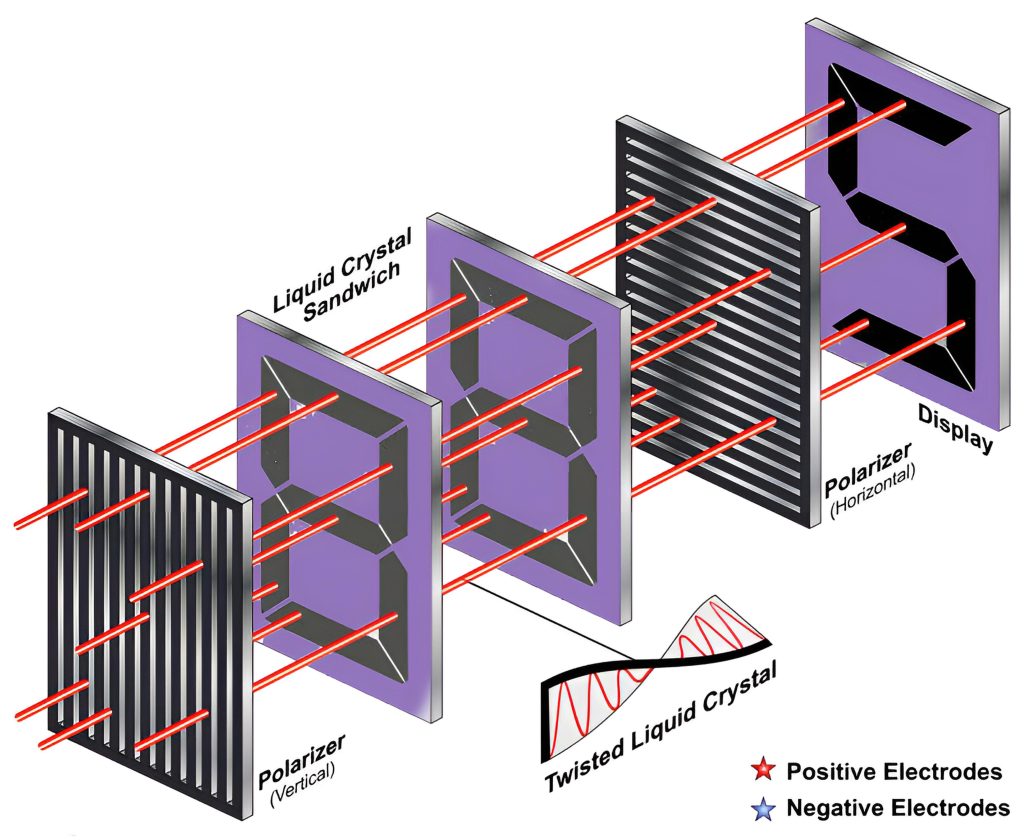
To partake in gaming sans the vexations of screen tearing, the indispensible crux resides in Adaptive Sync technology. While both IPS and LED monitors profess support for this attribute, vigilance regarding the compatibility of your GPU is imperative.
The puzzler of Versatile Sync innovation with regards to IPS (In-Plane Exchanging) screens versus Drove (Light Emanating Diode) screens for gaming rotates around understanding how this innovation works and its suggestions for the gaming experience.
Versatile Sync Innovation Outline:
- IPS Screen: Versatile Sync, generally connected with advances like AMD FreeSync, is intended to diminish screen tearing and stammering during gaming. IPS screens, known for their variety precision and wide survey points, can profit from Versatile Sync support, giving a smoother gaming experience by synchronizing the screen’s invigorate rate with the illustrations card’s casing rate.
- Driven Screen: The expression “Drove” principally alludes to the backdrop illumination innovation, and Drove screens can use different board types, including IPS. Whether a Drove screen consolidates Versatile Sync relies upon the particular model. Many gaming-focused Drove screens additionally embrace Versatile Sync advances like FreeSync or G-Sync to improve the gaming visuals.
Tending to Screen Tearing and Stammering:
- IPS Screen: Generally, IPS boards could have had higher reaction times, possibly prompting issues like screen tearing in speedy games. Versatile Sync in IPS screens helps address this test by progressively changing the screen’s revive rate to match the shifting casing rates created by the illustrations card, bringing about a sans tear and smoother gaming experience.
- Driven Screen: Like IPS screens, Drove screens can have different board innovations, and the reconciliation of Versatile Sync adds to decreasing or taking out visual antiques, for example, screen tearing and stammering. This is especially favorable during interactivity situations with fast movement.
G-Sync and FreeSync Contemplations:
- IPS Screen: G-Sync, NVIDIA’s Versatile Sync innovation, and FreeSync, AMD’s partner, are normal advancements related with Versatile Sync. G-Sync or FreeSync may be supported by gaming IPS monitors, depending on the model and manufacturer. The decision frequently relies upon the designs card being used and individual inclinations.
- Driven Screen: The accessibility of G-Sync or FreeSync on Drove screens differs by model. Many gaming-focused Drove screens support either of these advancements, giving clients adaptability in picking a screen that lines up with their designs card biological system.
Benefits for Gaming Experience:
- The two IPS and Drove screens outfitted with Versatile Sync can convey a more vivid and liquid gaming experience. By decreasing visual irregularities like tearing and faltering, Versatile Sync adds to smoother interactivity, particularly in illustrations serious and speedy gaming situations.
Specific Models to Consider:
- While investigating screens, it’s crucial for audit the determinations of individual IPS and Drove models to discover whether they consolidate Versatile Sync innovation and assuming they are viable with the illustrations card in your gaming arrangement.
All in all, the conundrum of Versatile Sync innovation is pertinent to the two IPS and Driven screens, giving an answer for normal gaming visual difficulties. The inclusion of Adaptive Sync can significantly enhance the gaming experience by ensuring a more synchronized and tear-free display, regardless of the type of monitor you choose—IPS or LED.
The Fiscal Paradigm IPS Monitor vs LED for Gaming
Budget considerations often loom large in the selection of a gaming monitor. LED monitors, notably those housing TN panels, gravitate towards budget-friendliness. In contrast, IPS monitors incline towards loftier price points, a reflection of their preeminence in color precision and expansive viewing horizons.
The financial worldview while looking at IPS (In-Plane Exchanging) screens to Drove (Light Transmitting Diode) screens for gaming includes understanding the expense contemplations related with every innovation. We should investigate the monetary parts of these screen types:
Authentic Expense Patterns:
- IPS Screen: By and large, IPS screens were frequently valued higher contrasted with screens with other board advancements like TN (Wound Nematic). This was because of the assembling intricacy and the unrivaled variety generation abilities of IPS boards.
- Driven Screen: The expression “Drove” regularly alludes to the backdrop illumination innovation, and Drove screens can utilize different board types, including IPS, TN, or VA (Vertical Arrangement). Driven screens became famous because of their energy proficiency and thin plans, and they are accessible across an extensive variety of costs.
Cost of IPS Monitor:
- Basic IPS Designs: Section level IPS screens are presently accessible at additional reasonable costs. These screens might miss the mark on cutting edge includes yet at the same time offer the advantages of IPS innovation, for example, wide survey points and exact variety generation.
- Gaming IPS Screens: IPS screens planned explicitly for gaming with highlights like high revive rates, low reaction times, and Versatile Sync will quite often be evaluated higher. However, a wider selection of gaming IPS monitors at a variety of price points has emerged as a result of increased market competition.
Driven Screen Expenses:
- Different Board Innovations: Driven screens can use different board advances, and their expenses can shift as needs be. TN boards are by and large more affordable, while IPS and VA boards might order greater costs.
- Gaming Drove Screens: LED monitors designed specifically for gaming and featuring adaptive sync technologies, high refresh rates, and quick response times may also be more expensive. Notwithstanding, there are spending plan well disposed Drove choices that take care of a more extensive shopper base.
Goal and Extra Elements:
- IPS Screen: Higher-goal IPS screens with extra elements like HDR (High Unique Reach) backing might be evaluated higher. These screens frequently target clients who focus on both variety precision and high level visual abilities.
- Driven Screen: Driven screens, contingent upon goal and extra elements like invigorate rate and HDR support, can likewise have changing expenses. LED gaming monitors with more advanced features may cost more than basic LED monitors.
Financial plan Cordial Choices:
- IPS Screen: The market has seen a development of spending plan agreeable IPS screens, permitting clients to get to IPS innovation at additional reasonable costs. These screens might miss the mark on gaming-explicit highlights yet offer great variety quality.
- Driven Screen: Driven screens, being a different classification, incorporate financial plan cordial choices reasonable for general use, including gaming. Clients can track down Drove screens with different particulars to fit different spending plan limitations.
All in all, the monetary worldview of IPS versus Driven for gaming includes thinking about the particular highlights and innovations inside a given financial plan. The two IPS and Drove screens are accessible across a range of price tags, and the choice at last relies upon individual inclinations in regards to board type, goal, revive rate, and gaming-explicit highlights, while remembering financial plan imperatives.
Pondering Power Consumption IPS Monitor vs LED for Gaming
Does trepidation about your electricity bill haunt your deliberations? LED monitors, as a rule, demonstrate frugality in power consumption when juxtaposed with their IPS counterparts. While not a watershed moment for all, this is a facet worthy of contemplation.
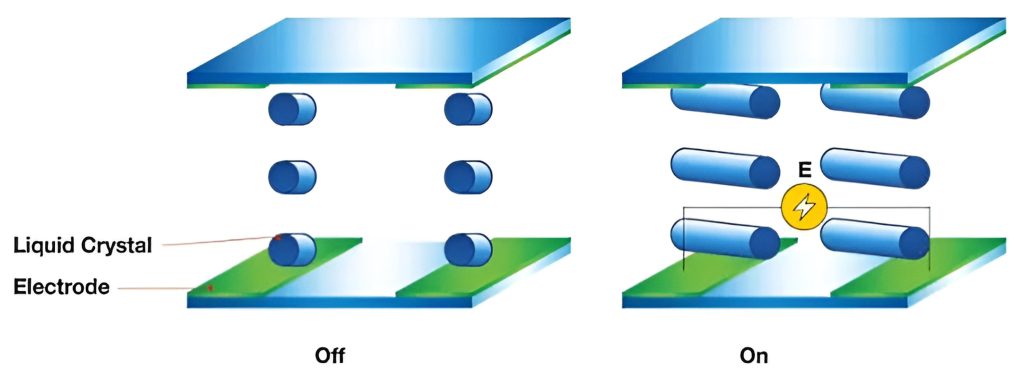
Contemplating power utilization while contrasting IPS (In-Plane Exchanging) screens to Drove (Light Discharging Diode) screens for gaming includes thinking about the energy effectiveness of these advancements. We should investigate how power utilization factors into the dynamic cycle:
Power Consumption of the IPS Monitor:
- Basic IPS Designs: Passage level IPS screens are by and large energy-effective, particularly contrasted with more seasoned show innovations like CRT (Cathode Beam Cylinder) screens. Essential IPS models frequently consume moderate measures of force and are planned in light of proficiency.
- Gaming IPS Screens: Gaming-focused IPS screens with higher invigorate rates and high level elements might consume more power than essential IPS models. The consideration of advances like Versatile Sync and higher brilliance levels can add to expanded power necessities.
Driven Screen Power Utilization:
- Energy Proficiency: Driven screens, as a classification, are known for their energy productivity. Driven background brightening consumes less power appeared differently in relation to additional carefully prepared headways like CCFL (Cold Cathode Glaring Light) scenery enlightenment used in some LCD screens.
- Board Innovation Effect: Power utilization in Drove screens can fluctuate in view of the hidden board innovation. For instance, Drove screens utilizing TN boards may for the most part consume less power than those with IPS or VA boards.
Goal and Elements Effect:
- IPS Screen: Higher-goal IPS screens might require somewhat more power because of the expanded number of pixels. Furthermore, highlights, for example, HDR support and higher revive rates can add to higher power utilization in gaming IPS screens.
- Driven Screen: Like IPS screens, the power utilization of Driven screens can be affected by factors like goal, invigorate rate, and extra highlights. Gaming Drove screens with cutting edge capacities might consume more power than essential models.
Luminance Levels:
- IPS Screen: IPS screens frequently give superb variety precision and brilliance levels, yet higher splendor settings can add to expanded power utilization. The effect on power utilization might fluctuate in view of the particular model and use situations.
- Driven Screen: LED backlighting maintains energy efficiency while allowing for high brightness levels. Clients can change brilliance settings to affect power utilization, with lower splendor levels for the most part bringing about decreased power use.
Energy-Saving Elements:
- IPS Screen: A few IPS screens come furnished with energy-saving elements, for example, programmed brilliance change in view of encompassing lighting conditions. These highlights can add to by and large power proficiency.
- Driven Screen: Driven screens might incorporate comparative energy-saving highlights, permitting clients to advance power utilization in view of their inclinations and natural circumstances.
In general Contemplations:
- Individual usage patterns, such as the length and intensity of gaming sessions, as well as the chosen monitor’s specific features and settings, must be taken into account when calculating power consumption.
- The two IPS and Drove screens, when planned in view of energy proficiency, can be appropriate decisions for clients aware of force utilization.
In conclusion, power consumption can vary depending on panel technology, resolution, brightness levels, and gaming features, but both IPS and LED monitors can be energy-efficient. Clients ought to consider their particular inclinations and use situations while picking a screen that finds some kind of harmony among execution and energy proficiency.
Special Offer this Monitor for Gaming
| Company Name | Model (Official Website) | Display Type | Display Size |
|---|---|---|---|
| ASUS | ROG Swift PG279QZ | IPS | 27 inches |
| Acer | Predator X27 | IPS | 27 inches |
| Alienware | AW3420DW | IPS | 34 inches |
| MSI | Optix MAG271CQR | VA | 27 inches |
| BenQ | ZOWIE XL2546K | TN | 24.5 inches |
The Edifice of Durability and Longevity
As you embark on the pilgrimage of investing in a gaming monitor, durability and longevity rank high on your list of requisites. LED monitors have cultivated a reputation for resilience, attributable to their robust underpinning in backlighting technology. On the contrary, IPS panels, while sturdier, might not extend the same leniency in the face of inadvertent mishandling.
Magnitude and Configuration IPS Monitor vs LED for Gaming

Gaming ecosystems present an eclectic array of dimensions and contours. Thankfully, both IPS and LED monitors extend a plenitude of screen sizes and configurations. Whether your predilection leans toward a prodigious ultrawide spectacle or a compact rendition, an avenue awaits your exploration.
The expressions “extent” and “arrangement” with regards to IPS (In-Plane Exchanging) screens versus Driven (Light Transmitting Diode) screens for gaming can be deciphered in at least one or two ways. We should investigate how these terms could apply:
Extent – Size and Goal:
- IPS Screen: The greatness of an IPS screen frequently alludes to its size and goal. IPS screens come in various sizes, from standard 24-inch models to greater sizes, for instance, 27 inches or more. The objective, similar to Full HD (1920×1080), Quad HD (2560×1440), or 4K (3840×2160), moreover adds to the overall significance, choosing the pixel thickness and clearness of the feature.
- Driven Screen: As a broad category, LED monitors include IPS and other panel technologies. Like IPS screens, the extent of a Drove screen is affected by its size and goal. Driven backdrop illumination is an innovation utilized across various board types.
Configuration – Type and Features of the Panel:
- IPS Screen: The design of an IPS screen includes its board type (IPS) and the elements it offers. Wide survey points and precise variety proliferation are signs of IPS boards. Gaming-centered IPS screens could have unequivocal arrangements, for instance, higher stimulate rates (e.g., 144Hz or 240Hz), lower response times, and support for Adaptable Sync advancements like FreeSync or G-Sync.
- Driven Screen: Driven screens can utilize different board innovations, including IPS, TN, or VA. An LED monitor’s configuration is determined by its panel type and additional features. Gaming Drove screens might include quick reaction times, high invigorate rates, and versatile sync innovations, like gaming IPS screens.
Greatness and Arrangement Contemplations for Gaming:
- IPS Screen: The immersiveness of a gaming experience can be affected by the size and resolution of an IPS monitor. Higher goals give more clear visuals, while bigger sizes upgrade the feeling of scale. The design, including gaming-explicit elements, adds to smooth ongoing interaction and responsiveness.
- Driven Screen: Similar contemplations apply to gaming Drove screens. Not entirely settled by size and goal, impacts the gaming experience. The setup, which incorporates board type and gaming highlights, is urgent for accomplishing ideal execution in speedy games.
Technology for Adaptive Sync:
- IPS Screen: Gaming IPS screens might integrate Versatile Sync advancements like FreeSync or G-Sync. These innovations improve the design by diminishing screen tearing and faltering, adding to a smoother gaming experience.
- Driven Screen: Gaming Drove screens, paying little mind to board type, can likewise include Versatile Sync advances. The incorporation of such elements is essential for the screen’s design custom-made for gaming.
While thinking about the greatness and arrangement of IPS versus Driven screens for gaming, center around factors like size, goal, board type, and gaming-explicit highlights. The two IPS and Drove screens offer a large number of choices, and the decision relies upon individual inclinations, gaming needs, and financial plan contemplations.
Discerning the Monitor Suited to Your Needs
Ultimately, the conundrum of selecting between an IPS and LED monitor hinges on your gaming predilections and financial considerations. If your allegiance lies with color precision, expansive viewing horizons, and you are amenable to a slightly heftier expenditure, the IPS monitor assumes the mantle of the frontrunner. Conversely, if budget constraints loom large or you harbor an affinity for blistering response times, a judiciously chosen LED monitor can engineer a splendid gaming saga.
Knowing the screen fit to your necessities includes considering a few critical elements to guarantee that the presentation meets your particular prerequisites and inclinations. Here are a few perspectives to consider:
Planned Use:
- Determine the monitor’s primary function. The features you prioritize will depend on the intended use, which could be gaming, professional content creation, general productivity, or a combination of the above.
Board Type:
- Depending on your requirements and preferences, think about the type of panel:
- IPS (In-Plane Exchanging): Offers wide survey points and exact variety multiplication, appropriate for proficient undertakings, content creation, and vivid gaming.
- TN (Curved Nematic): Known for quick reaction times, making them appropriate for high speed gaming. Notwithstanding, variety precision and review points might be compromised contrasted with IPS.
- VA (Vertical Arrangement): strikes a balance between the fast response times of TN and the wide viewing angles of IPS. Frequently picked for gaming and media utilization.
Resolution:
Select a resolution based on your gaming or work needs:
- Full HD (1920×1080): Reasonable for standard efficiency assignments and relaxed gaming.
- Quad HD (2560×1440): provides enhanced sharpness and is ideal for professionals, gamers, and content creators.
- 4K (3840×2160): Gives the most elevated level of detail, advantageous for photograph and video altering, as well as vivid gaming.
Size:
- Consider the actual size of the screen in view of your work area and inclinations. Bigger screens offer a more vivid encounter, yet they might require more work area space.
Revive Rate:
- For gaming, a higher invigorate rate adds to smoother movement. Consider screens with revive paces of 144Hz or higher for an ideal gaming experience.
Reaction Time:
- A lower reaction time is critical for decreasing movement obscure in speedy gaming situations. Search for screens with reaction seasons of 5ms or lower.
Versatile Sync Innovation:
- In the event that gaming is really important, consider screens with Versatile Sync advancements like FreeSync or G-Sync. These advances assist with wiping out screen tearing and stammering.
Connectivity:
- Guarantee the screen has the important ports for your gadgets, like HDMI, DisplayPort, or USB-C. Consider the number and kinds of ports expected for your particular arrangement.
Variety Precision and Adjustment:
- For proficient errands like substance creation or visual communication, focus on screens with great variety exactness. A few screens come pre-adjusted or offer alignment choices for exact variety multiplication.
Budget:
- Based on your financial considerations, establish a budget. There are screens accessible at different costs, so finding one that meets your requirements affordable for you is conceivable.
Surveys and Client Criticism:
- Research audits and client input for explicit models. This gives bits of knowledge into genuine execution, likely issues, and client fulfillment.
Guarantee and Backing:
- Check out the manufacturer’s warranty and support options. A dependable guarantee and great client care can be critical for resolving issues on the off chance that they emerge.
Via cautiously considering these elements, you can perceive the screen that best suits your necessities, whether for gaming, proficient errands, or general use. Fitting your decision to your particular prerequisites guarantees a really fulfilling and powerful processing experience.
Future-Proofing Your Configuration
| Company Name | Model | Display Type | Display Size |
|---|---|---|---|
| Dell | UltraSharp U2719D | IPS | 27 inches |
| ASUS | ProArt PA278Q | IPS | 27 inches |
| LG | 27UK850-W | IPS | 27 inches |
| Acer | R240HY | IPS | 23.8 inches |
| HP | Pavilion 22cwa | IPS | 21.5 inches |
The panorama of gaming technology evolves at a frenetic pace. To secure the perpetuity of your setup, deliberate upon facets such as refresh rates, synchronization with emergent technologies, and avenues for upgradation.
In the enduring tug-of-war between IPS and LED monitors for gaming supremacy, there exists no one-size-fits-all verdict. Each technology brandishes its unique strengths and vulnerabilities, and your choice should dovetail harmoniously with your gaming ethos and fiscal constraints. Irrespective of your ultimate decision, it remains paramount that the quintessence of your gaming encounters brims with satisfaction.
FAQs of IPS Monitor vs LED for Gaming
Is LED better than IPS for gaming?
- The choice between LED and IPS depends on personal preference and gaming needs. LED monitors often offer higher refresh rates, which can be beneficial for fast-paced gaming, while IPS monitors provide better color accuracy and wider viewing angles. The best choice depends on your priorities.
- Reference: LED vs. IPS Gaming Monitor: Which One is Better?
Are IPS monitors good for gaming?
- Yes, IPS monitors are good for gaming. They offer excellent color quality and wide viewing angles, making games look vibrant and immersive. However, their response times may not be as fast as some gaming-specific monitors.
- Reference: Are IPS Monitors Good for Gaming?
Are LED monitors better for gaming?
- LED monitors are suitable for gaming, especially those with high refresh rates, as they can provide smoother gameplay. However, LED is a backlight technology, and it can be found in both gaming and non-gaming monitors.
- Reference: LED vs. LCD Monitors: Which One Should You Choose?
Are IPS monitors better for eyes?
- Yes, IPS monitors are considered better for eye comfort due to their wide viewing angles and reduced color distortion at off-angles. This can lead to less eye strain during prolonged use.
- Reference: IPS vs. TN vs. VA: Which LCD Monitor Technology Is Best?
Is IPS better for FPS?
- IPS monitors can be used for FPS (First-Person Shooter) games, but they may have slightly slower response times compared to TN panels. Serious FPS gamers often prefer TN panels for the fastest response times.
- Reference: IPS vs. TN Panels for Gaming: Which Is Better?
What is the best type of monitor for gaming?
- The best type of monitor for gaming depends on individual preferences and gaming styles. Many gamers prefer high-refresh-rate monitors with low response times, but the choice can vary based on the games you play and your budget.
- Reference: How to Choose the Best Monitor for Gaming
Are IPS monitors good for dark games?
- Yes, IPS monitors can display dark scenes in games accurately, thanks to their excellent color reproduction and contrast ratios. They provide a more immersive experience for dark and atmospheric games.
- Reference: Best Gaming Monitors for Dark Room
Do IPS monitors have input lag?
- IPS monitors can have input lag, but it varies depending on the specific model. High-end IPS gaming monitors often have lower input lag, making them suitable for gaming.
- Reference: Input Lag Database
Is 75 Hz good for gaming?
- A 75 Hz refresh rate can provide a decent gaming experience, especially for casual gamers. However, serious gamers often prefer monitors with higher refresh rates (e.g., 144 Hz or 240 Hz) for smoother gameplay.
- Reference: Is a 75Hz Monitor Good for Gaming?
How many Hz is good for gaming?
- The ideal refresh rate for gaming varies depending on your preferences and the types of games you play. Many gamers find 144 Hz to be a good balance between smoothness and affordability, while competitive gamers may prefer even higher refresh rates.
- Reference: What is a Good Refresh Rate for a Gaming Monitor?
What is the No 1 gaming monitor in the world?
- The “No 1” gaming monitor can vary based on personal preferences, features, and price points. There isn’t a single monitor that is universally considered the best. It’s advisable to research and choose one that suits your specific gaming needs.
- Reference: Best Gaming Monitors 2023
Is a 25 or 27-inch monitor better for gaming?
- The choice between a 25-inch and a 27-inch monitor for gaming depends on your preference for screen size and available desk space. Both sizes can offer an enjoyable gaming experience, so it’s a matter of personal comfort.
- Reference: Choosing the Right Size Gaming Monitor
Do IPS monitors lay claim to superior color precision?
- Indeed, IPS monitors enjoy an illustrious repute for their peerless fidelity to color, rendering them the preferred choice for both professional graphic artisans and gaming aficionados.
- Reference: IPS vs. TN vs. VA Panels: Which Is Best for Gaming?
Do LED monitors outpace their counterparts in terms of response times?
- Certain top-tier LED monitors flaunt swifter response times, rendering them adept for high-octane gaming; however, this assertion is contingent on the specific model in question.
- Reference: LED vs. LCD vs. OLED vs. QLED: Understanding Different Display Technologies
Can an IPS monitor be harnessed for competitive gaming
- Certainly! A slew of professional gamers harness IPS monitors for their unparalleled color replication and panoramic viewing spectrums.
- Reference: Best Gaming Monitors 2023
Do LED monitors operate with greater energy efficiency?
- As a general rule, LED monitors tend to be frugal in power consumption when contrasted with IPS monitors.
- Reference: LED vs. LCD vs. OLED: Understanding Display Technology
How does one determine the optimal monitor size for their gaming setup?
- Contemplate the expanse of available space and heed your individual proclivities. Larger screens usher in heightened immersion, whereas more modest dimensions might prove pragmatic in compact configurations.
- Reference: Choosing the Right Size Gaming Monitor
- Motorola Baby Monitor 2023 : Ensuring Safety and Peace of Mind
- HP 27 Inch Monitor | Boost Your Productivity
- Best 4K 240Hz Gaming Monitor
- How Many Diapers Does a Newborn Use a Day
- Does gpu fan always spin? | 2024 - December 27, 2023
- GPU Fan Rotation, Save Energy | The Truth About 2024 - December 25, 2023
- How to Increase GPU Fan Speed | Ultimate Guide! 2024 - December 19, 2023



